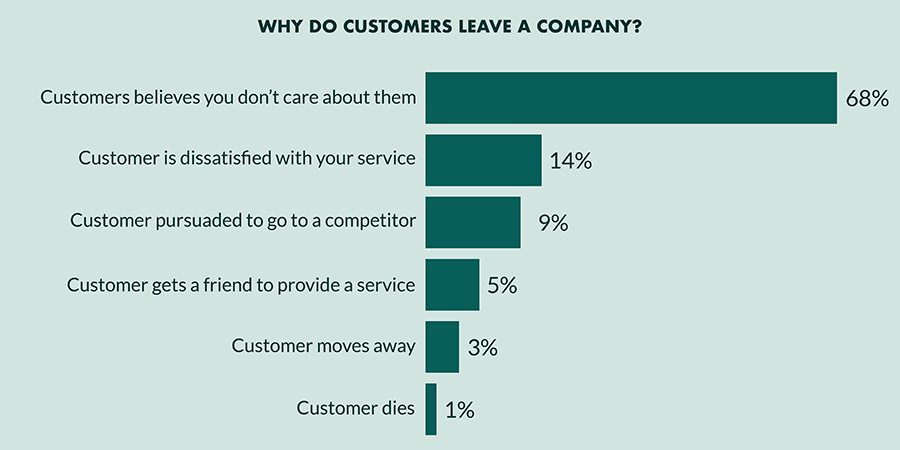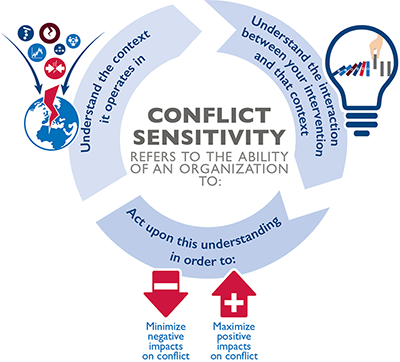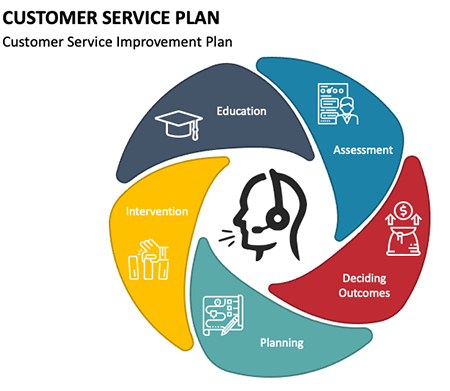Avoiding Conflict Situations
in Customer Service
See also: Avoiding Common Communication Mistakes
While you can try your best to avoid conflicts in your day-to-day life, there is no way to steer clear of them in business. Businesses have leveraged many conflict management techniques and suggestions over the years.
Here is a breakdown of why conflicts happen, the difference between managing and resolving a conflict, and some of the best skills and conflict management techniques in the workplace.
Why Do Conflicts Happen and How Can You Provide a Positive Customer Experience?
A conflict is a disagreement between two or more parties, whether between two people, a group of friends, or, in this case, conflict resolution in customer service between a customer and a company.
In customer service, conflicts often arise from the customer's side, usually from dissatisfaction with the product or misunderstanding. The problem can build from almost anything: an issue with the service or product, dissatisfaction with the buying experience, misunderstanding of the terms of use, etc.
Using advanced tools like inbound call tracking to identify common conflicts and adjust your tactics for some of the most challenging situations can elevate your business and increase customer satisfaction.
What is Call Tracking?
Here are some of the most common reasons conflicts happen in customer support.
-
Unmet Customer Expectations
People expect businesses to have quick and effective customer service. When these expectations are not met, there is a high chance that the business will lose this customer.
An HBR study established that customers whose complaints are taken care of within 5 minutes are willing to continue spending on future purchases.
Service Quality
No matter what caused the conflict, the employee's job is to provide quality customer service to resolve the conflict in a way that completely satisfies the customer and meets their expectations.
Cultural Differences
Conflicts arise when the parties have contrasting opinions, perspectives, ideas, or values. With different cultural backgrounds and thoughts, the only way to resolve a conflict is to find an idea that all parties agree to and are satisfied with.
Limited Resources and Training
It takes expertise, management skills, and patience to resolve conflicts and improve the customer journey. Limited resources and training show results, leading to lower sales as the customer experience suffers.
Lack of Empathy
In a business scenario, it's in the employee's interest to resolve a conflict and enhance the customer's experience. That’s why showing empathy and understanding the client’s needs is essential. Moreover, 70% of the customer's buying experience relies on how the customer feels that they are being treated.
Failing to resolve a conflict always negatively affects the brand, so employee customer service representatives should know the best tools and customer service management strategies that will help them overcome the toughest situations.
Learn the Difference Between Managing and Resolving a Customer Conflict
When a conflict is well managed, it can be simply resolved or even casually settled without wrecking the customer experience and satisfaction and not finding a resolution. The right conflict management techniques minimize aggression in a conflict, build a good experience, and reassure the customer.
The avoiding conflict management style includes:
- Active listening to a customer's complaints
- Knowing how to perceive emotions and what they mean
- Positive reactions to all feedback
- An open conversation where you are not trying to hide the truth from the customer
One of the main reasons customers switch products and services is because they feel unappreciated or poorly treated by the company’s customer service.

Why is Optimizing Customer Touchpoints Online Beneficial for Businesses?
If you provide your customers with the ability to interact with the company using different channels smoothly, then you can leverage the great benefits long term:
Enhanced customer experience and satisfaction: Consistent experiences across all digital channels, such as website, social media, or email, create a positive impression, leading to a better customer experience.
-
Customer loyalty: Positive customer experiences foster trust and loyalty among clients and encourage them to repeat their purchases.
Higher conversions: Well-optimized touchpoints guide customers smoothly through the buying journey, which leads to higher conversion rates.
Efficient problem resolution: You can implement chatbots or self-service portals in your social media customer service strategy, allowing customers to find answers to their questions quickly.
Competitive edge: A well-optimized online presence makes your business stand out from key competitors in the market. Customers are more likely to choose brands that provide a seamless, user-friendly experience.
Top Conflict Resolution Customer Service Skills for Support Reps
The following conflict resolution skills paired with the perfect management style will help reduce any conflict escalation and will help resolve almost all disagreements with a customer.

Apologize
No matter what started a conflict, even if your company hasn't done anything wrong, a company's apology can go a long way and improve customer satisfaction. Acknowledge what the customer feels and apologize for any inconvenience your company might have caused.
Studies show that 45% of customers will withdraw their negative feedback after an apology, whereas 23% will only do so after compensation.
Quick Reaction
83% of customers feel more loyal to a brand that actively responds to and resolves their complaints. It might be tough to resolve conflicts initially, but after tracking customer service calls, you can compile a list of the most common complaints and resolution options.
These can be implemented by the service agent instantly without having to put the customer on hold. A customer's time is valuable, and they do not want to spend all day on the phone with an agent who can't explain or solve their problem.
Ask Questions

Some might think that asking the customer many questions can annoy them. Still, asking the correct questions that slowly lead to a resolution will show the customer that you are truly interested in resolving their problem.
With the right set of questions and customer service strategy, you have a high chance of ruling out the problem, finding a cause for the problem, or simply cooling down the customer so that they don't feel as let down. Statistics show that 73% of customers will stay loyal to a brand as a result of a friendly customer service agent.
Track Customer Service Calls
Customer service call tracking software is a must for all businesses; it's the perfect source for further business improvements. According to Forrester, 82% of marketers agree that insights from inbound calls and call experience may reveal valuable blind spots in an organization.
Summing Up
Every company deals with unhappy customers and complicated customer support cases. After all, that's part of the business. That’s why resolving conflict is important and helps to avoid inconvenient situations and provide a top-notch customer experience.
You are not the first or last to come to a disagreement, so you should treat it as an unavoidable process and take all the measures to make conflict resolution as simple and intelligent as possible.
About the Author
Victoria Berezhetska is a Content Lead at Phonexa. Victoria has a degree in Bachelor of Science in Business Administration with extensive working experience as a PR specialist and content writer, touching on many different areas of digital marketing. In her work at Phonexa, she covers a wide range of topics, including call tracking, lead generation, marketing automation, and so much more.
